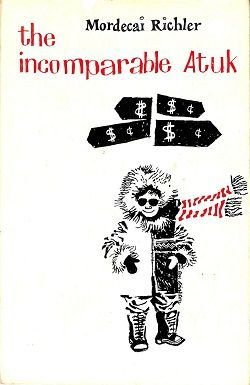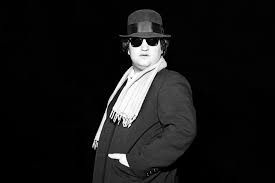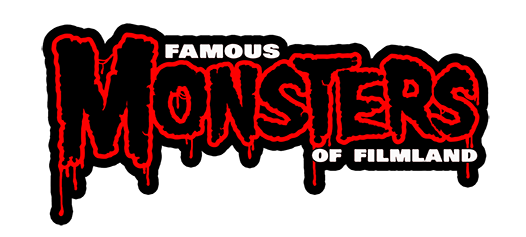The unmade film script Atuk is believed to be cursed by some. The plot follows a teenage Inuit poet from Baffin Island, and it’s based on Mordecai Richler’s 1963 novel The Incomparable Atuk or Srick Your neck Out as published in the United States. The protagonist is whisked away to Toronto, where for some reason he experiences instant fame. After being lauded by the city dwellers of Canada, Atuk swiftly takes on the avarice and airs of the modern city. To pursue more ‘lucrative’ enterprises, he gives up writing poetry, but all of his attempts ultimately fail. It is notable that The Incomparable Atuk pokes fun at the haughtiness of a Canadian culture that aspires to the ‘American Dream.’

The cinematic adaptation of the novel was written by Tod Carroll (National Lampoons Magazine) and commissioned by filmmaker Norman Jewison (Rollerball) in 1977.
In the script, Atuk is an Alaskan native who wants to experience the world beyond his remote town. When the stunning Michelle Ross comes to his village on an assignment, he immediately falls in love with her. Atuk goes with her and her crew back to New York, where he is mixed up in a plot to superimpose an urban metropolis on the wildness of Alaska.
In 1979, when Carroll had finished writing the script, he cast an actor friend of his, John Belushi, in the role of Atuk. Belushi was interested in the project enough to take the part. But tragedy struck in March of 1982 when Belushi’s trainer Bill Wallace discovered the actor dead in his hotel room.

Belushi’s overdose on cocaine and heroin was confirmed by an autopsy. Catherine Evelyn Smith, a rock groupie and backing vocalist, was identified as the drug supplier.
Smith was detained and questioned by law enforcement, but he was eventually freed without being brought to trial. Speculation ensued that Smith was a police informant, and Belushi’s death was a drug sting gone bad. Smith eventually served 15 months in prison after pleading guilty to involuntary manslaughter.
Belushi’s official cause of death was listed as a heroin overdose, despite the fact that the findings of the autopsy were challenged. He was young for his age, barely 33.
United Artists acquired Atuk after it went back on the market. Sam Kinison, an actor and comedian, was cast by United Artists. After Kinison gave his OK, production commenced off in 1988. But Kinison was challenging to work with because of his own struggles with alcoholism.
Reportedly, Kinison lost interest in the project after reading the screenplay. He started asking for rewrites because he wanted more say in the creative process. The production company intervened and sued. The production halted due to the actor’s drinking and Kinison’s authoritarian behavior. Kinison took over the negotiating position once again in 1992.
On the evening of April 10, 1992, a drunk driver collided head-on with the car Kinison was driving to get to a comedy show. Kinison was severely injured, although he did not die instantly. Kinison reportedly said, “I don’t want to die.” For the life of me, I don’t want to die. He paused before asking “But why?” and then said “Okay, okay, okay” before passing away from his wounds. According to Kinison’s buddy, “whatever voice was talking to him gave him the right answer and he just relaxed with it.”
John Candy, another well-known comedian, acquired the rights to the Atuk screenplay. In 1993, Candy asked for and received a copy of the script before accepting the part of the protagonist. During a break from filming Wagon’s East in 1994, Candy was found dead in his hotel room. Candy apparently died of a heart attack, although no autopsy was performed on his body.
It’s assumed that screenwriter Michael O’Donoghue either presented Candy with the screenplay or read it with him. Only eight months after Candy’s death, O’Donoghue again passed away, this time from a cerebral hemorrhage at the age of 54.
United Artists revisited the script in 1996, this time casting Chris Farley as Atuk. Farley was inspired by John Belushi throughout his life and tried to emulate the performer in many ways. Farley was overjoyed at the chance to play a part that his hero had once contemplated. Phil Hartman, a coworker of Farley’s, pondered joining the cast. Farley was a huge name in the field of comedic films, while Hartman spent many years as a cast member on SNL. It looked like Atuk was going to be a smashing success.
Whether or not that would prove true, however, is now unknown because the Curse of Atuk has struck once again. After taking a speedball (a mixture of cocaine and morphine), Farley was discovered by his brother John on December 18, 1997. He died at the same age as his hero, John Belushi, 33.
Phil and Brynn Hartman’s marriage was turbulent; the couple frequently fought. On May 27, 1998, Hartman had another argument after returning home from a restaurant. Hartman went to his room after the fight and promptly went to sleep. The incident occurred at 3 a.m., when Brynn entered the bedroom with a handgun and shot Hartman in the head. After murdering her husband, Brynn escaped to a friend’s house where she confessed. Initially, her companion did not trust her. However, he contacted authorities after arriving home and discovering Hartman’s body.
Brynn barricaded herself in the bedroom as the police escorted the rest of the family out of the house. A witness reportedly heard Brynn exclaim, “I told you I did it!” I have no idea why I did it, but I killed him. Brynn shot and killed herself not long after.
The bloodied footprints left by people engaged in the Atuk project raise many questions. While some people refuse to believe in the curse, others insist it is real.
Everyone who perished in Atuk had their own problems to deal with long before they read the script. Hartman’s marriage was in trouble, O’Donoghue had chronic headaches, and Farley, Belushi, Candy, and Kinison were all substance abusers.
Film executives ordered the confiscation of the Atuk script, and the film has yet to be made, despite the fact that both United Artists and author Tod Caroll have denied the existence of any supernatural elements.
It’s worth noting that the tupilaq is a mythical being in Inuit shamanism. The tupilaq is a monster or spirit of vengeance made from animal parts and even corpses, then sent out to seek and slay its target. Is the Curse of Atuk real, or a mere example of unfortunate coincidences? Perhaps nobody will ever know for sure.


